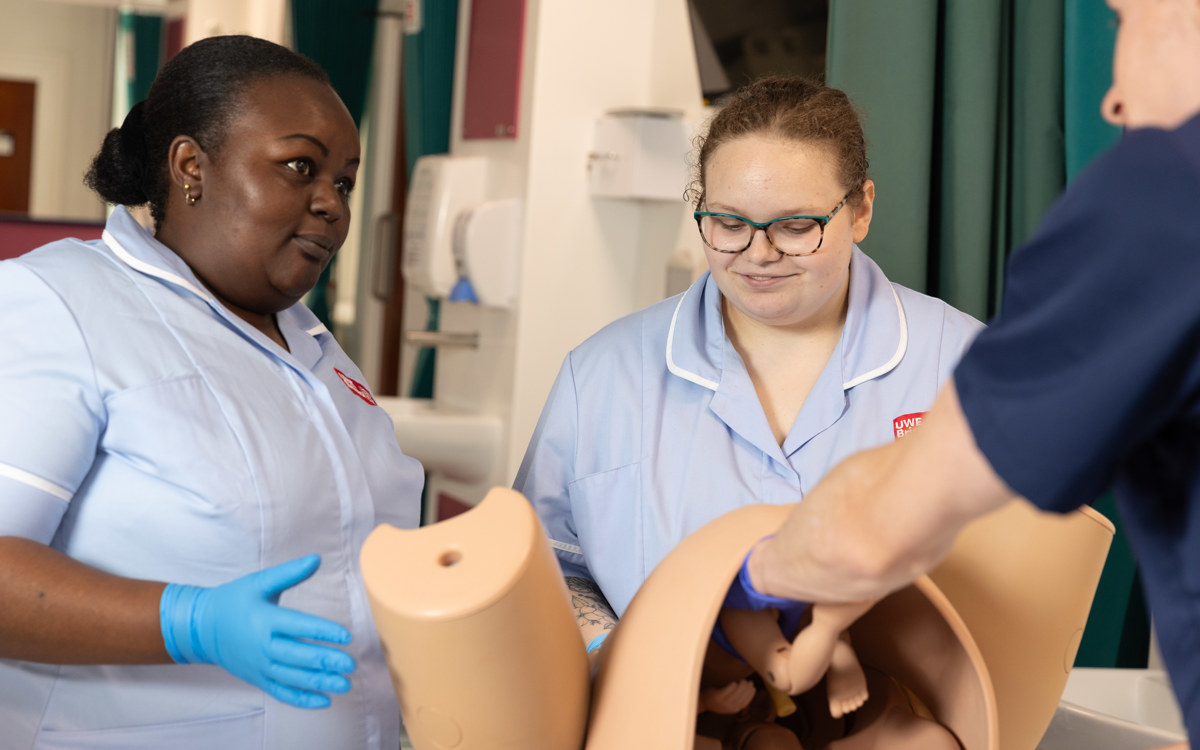Cervical Cerclage
Breakthrough medical development could significantly reduce number of pregnant women having unnecessary or ineffective surgery to prevent premature births.

Task trainer specialist Limbs & Things has partnered with leading obstetricians to help address inconsistencies in a common surgical procedure to prevent pre-term births.
In the UK, approximately 2% of pregnant women at risk of pre-term birth – up to 15,000 a year – have a cervical cerclage to try and prevent the premature labour. Cervical cerclage involves suturing (stitching) the cervix and is a common procedure performed worldwide used in up to 5% of pregnancies.
Very preterm birth of less than 32 weeks gestation is the biggest cause of mortality, neurological complications, neuropsychiatric and behavioural disorders in later life.

Leading premature birth specialist and Tommy’s Chair of Maternal and Fetal Health at King’s College London, Professor Andrew Shennan OBE(left), and NHS Fife obstetrician Dr Graham Tydeman (right), led a team to undertake the first ever studies of the actual surgical technique to try and improve the consistency – and therefore success - of the procedure.
The first trial involved asking 28 UK consultant obstetricians to perform their normal cerclage procedure on a cervical cerclage simulator, developed by Limbs & Things, using computerised tomography (CT) imaging to measure precisely where the sutures were being placed. The simulator consists of a realistic female pelvis and vagina with a replaceable cervix, and forms part of its world-leading PROMPT Flex birthing simulator range, ensuring a standardised anatomy for each participant.
The study revealed considerable variation in the height and depth of the suture, placement and tightness of the knot amongst the experienced obstetricians that took part.
The team then undertook a further study of 53 experts from 16 different countries and used the results of the first study to try to standardise the procedure, so women who are having it performed know there is a consistent approach to its execution.
The results showed that practising on the simulator did influence behaviour and improve consistency. Results of this study were presented at the national UK Preterm Birth meeting last month (January 24), which showed that while people appear to aim to do the same thing, many don’t achieve it.
Professor Shennan says: “This study aimed to provide a UK consensus opinion on cerclage technique. But the results are simply staggering – nobody realised there could be so much variation in the way cerclage is being performed.”
“We saw a significant variation in technique, including differences in how deeply inside the cervix the suture is placed and cases of the knot being tied with no tension at all. Whilst we know that higher sutures have better outcomes, a proportion were placed very low down. We need to establish and teach best practice to ensure the best outcomes for pregnant women and their babies. Currently, people learn from the person that taught them, which is clearly resulting in massive inconsistency. Simulators can allow really significant research that simply wouldn’t be possible on real patients.”
Dr Tydeman says: “Studies of different surgical procedures are not uncommon, but establishing how those operations are actually performed is a new idea. Before we developed this simulator, assessing consistency of this procedure was impossible to do without a consistent and realistic cervix for participants to use. We’ve shown that most people try to do the same thing but using the simulator we’ve been able to show some standardisation of technique amongst experts in a randomised trial.
“As it stands, at best, if these results are transferrable to real women, every year thousands of women in the UK and many more thousands around the world may be having surgery that is ineffective in preventing their baby’s premature birth, or at worst, causing harm.
“It is vital that we have standardisation in this procedure and now that we have a realistic simulator, our ultimate aim is to see simulator training with every doctor in training and practitioner required to demonstrate an ability to reach a common standard of technique on this or other similar simulators before they perform cerclage on real women.”
Anne Allin, commercial director at Limbs & Things says: “Our medical task trainers are designed in collaboration with medical professionals to ensure they address their training needs – they need to be as realistic as possible, providing the same look and feel as when performing on a real person, so the medical staff can learn, practice and become confident on products that feel like the real thing.

“It’s fantastic that our cervical cerclage module, which forms part of our PROMPT Flex birthing simulator range, has supported with this study, and could contribute meaningfully to a solution that would improve outcomes for mums and babies all over the world.”
The cervical cerclage simulator was invented by Dr Tydeman and developed with the team at NHS Fife in partnership with Guys and St Thomas’ NHS Foundation Trust and Limbs & Things.
About the study team
Dr Graham Tydeman and Professor Andrew Shennan, along with Professor Annette Briley, Guys and St Thomas’ Centre for Innovation, Transformation and Improvement (CITI) and Fife Research and Development team have developed a variety of medical simulators and a surgical device over the last 12 years with the current research involving further collaborations between the Scottish and London teams.
Did you like this article?
Share it on social media today, and remember to tag us!

